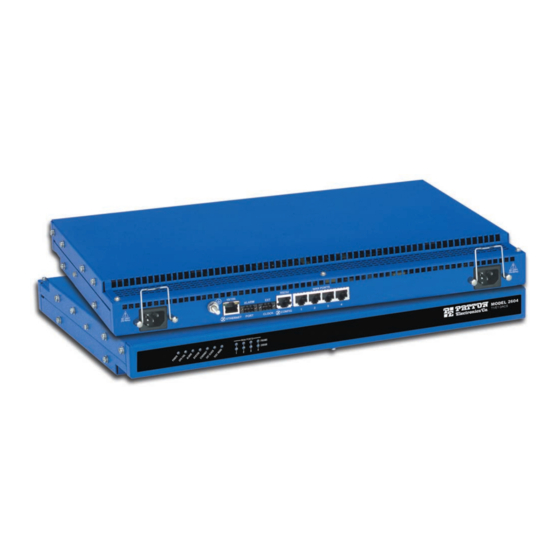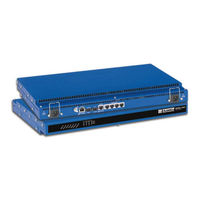
Patton electronics Model 2604 Manuals
Manuals and User Guides for Patton electronics Model 2604. We have 2 Patton electronics Model 2604 manuals available for free PDF download: Administrator's Reference Manual, Getting Started Manual
Patton electronics Model 2604 Administrator's Reference Manual (148 pages)
T1/E1 Digital Access and Cross-Connect System (DACS)
Brand: Patton electronics
|
Category: Network Hardware
|
Size: 5 MB
Table of Contents
-
Introduction
19 -
Home
23-
Introduction24
-
-
-
Introduction28
-
Alarms31
-
-
-
Introduction32
-
-
Alarms34
-
Alarm Time35
-
Alarm Count35
-
Clear Alarm35
-
-
DS0 Mapping39
-
-
-
Introduction40
-
Clocking
43 -
Ethernet
47-
Introduction48
-
-
Filter IP51
-
-
-
-
Introduction52
-
-
Icmp57
-
-
-
Introduction58
-
-
-
-
Introduction63
-
-
Modify66
-
Tcp
75-
Introduction76
-
-
-
Udp
81-
Introduction82
-
-
-
-
Introduction86
-
Snmp91
-
-
-
Introduction92
-
SNMP Window92
-
Out94
-
System
97
-
-
-
Introduction99
-
-
Cpu100
-
SNMP and HTTP100
-
Lan Ip100
-
Manufacturer101
-
Message Blocks101
-
Enclosure System102
-
Installation102
-
-
-
SNMP and HTTP104
-
Lan Ip105
-
Installation105
-
Other106
-
-
System Log109
-
-
-
Introduction110
-
-
Daemons111
-
Priority111
-
Maintenance114
-
-
-
Time (Sltick)115
-
-
-
Time (Slftick)116
-
-
T1/E1 Link
117
-
-
-
Introduction120
-
-
Test Settings127
-
-
-
-
-
-
-
T1/E1 Assignment
139-
Chapter Contents139
-
Introduction140
-
-
About
143 -
License
145-
Introduction146
-
-
Definitions146
-
Title147
-
Term147
-
Grant of License147
-
Warranty147
-
Termination147
-
-
-
Advertisement
Patton electronics Model 2604 Getting Started Manual (65 pages)
T1/E1 Digital Access and Cross-Connect System (DACS)
Brand: Patton electronics
|
Category: Network Hardware
|
Size: 1 MB
Table of Contents
-
Contents
3 -
-
-
Wan15
-
Lan16
-
Power System16
-
Alarm Port16
-
Temperature17
-
Altitude17
-
Humidity17
-
LED Display19
-
-
Approvals20
-
-
Introduction22
-
-
-
-
Introduction32
-
-
-
Home38
-
-
-
-
-
Introduction52
-
-
Calibration54
-
-
Maintenance55
-
-
Advertisement
Related Products
- Patton electronics Model 2711
- Patton electronics M-ATA
- Patton electronics M-AFA
- Patton electronics MicroLink-T1 2711 Series
- Patton electronics Model 1065
- Patton electronics MODEL 1075
- Patton electronics MODEL 2126
- Patton electronics MODEL 552
- Patton electronics MegaLink-1 2703RC
- Patton electronics MegaLink-1 2703RC-A

